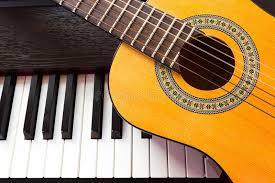Western Music: A Timeless Symphony of Culture and Creativity
Western music, a vast and rich tradition rooted in Europe, has evolved over centuries to become one of the most influential and diverse forms of musical expression in the world. From classical symphonies to modern pop hits, Western music reflects the cultural, social, and artistic developments of the Western world.
Historical Evolution
Western music has a long and fascinating history, typically divided into several major periods:
-
Medieval (500–1400): Early music was largely religious, with Gregorian chants and monophonic melodies dominating church services.
-
Renaissance (1400–1600): Marked by greater use of harmony and polyphony, music began to flourish in both sacred and secular settings.
-
Baroque (1600–1750): Composers like Johann Sebastian Bach and George Frideric Handel introduced dramatic contrasts and complex ornamentation.
-
Classical (1750–1820): Emphasized clarity, balance, and structure, with luminaries like Wolfgang Amadeus Mozart and Ludwig van Beethoven.
-
Romantic (1820–1900): Focused on emotion, storytelling, and individualism, exemplified by composers such as Chopin, Tchaikovsky, and Brahms.
-
20th Century to Present: Witnessed an explosion of styles, from jazz and rock to electronic, pop, and hip-hop, each reflecting modern life and technology.
Genres in Western Music
Western music spans a wide array of genres, each with its unique sound and appeal:
-
Classical Music: Known for its complexity and depth, it includes orchestras, operas, and chamber music.
-
Jazz: Originating in the early 20th century, jazz emphasizes improvisation and syncopation, with greats like Louis Armstrong and Miles Davis.
-
Rock and Roll: Revolutionized music in the 1950s, led by icons such as Elvis Presley and The Beatles.
-
Pop Music: Catchy, accessible, and ever-evolving, pop artists like Michael Jackson, Madonna, and Taylor Swift have shaped generations.
-
Hip-Hop and Rap: Emerging in the late 20th century, this genre combines rhythm, poetry, and social commentary.
-
Electronic and Dance: Tech-driven sounds dominate modern clubs and festivals, featuring artists like Daft Punk and Calvin Harris.
Instruments of Western Music
Western music features a broad range of instruments, including:
-
String instruments: Violin, cello, guitar, bass
-
Wind instruments: Flute, clarinet, saxophone, trumpet
-
Percussion: Drums, cymbals, piano
-
Electronic instruments: Synthesizers, drum machines, digital audio tools
Each instrument brings a unique tone and texture, allowing for a wide variety of musical styles and moods.
Cultural Impact
Western music has a powerful influence on global culture. It shapes fashion, language, politics, and even social movements. Music festivals like Glastonbury, Coachella, and Lollapalooza draw massive crowds, celebrating music as a universal language. It also plays a key role in film, television, and advertising, setting moods and enhancing storytelling.
Education and Expression
Music education is a vital part of many Western school systems. Learning music enhances creativity, discipline, and emotional expression. Whether playing in a school band or composing digital beats at home, Western music encourages personal growth and artistic exploration.
Conclusion
Western music is a living art form that continues to adapt and inspire. From ancient chants to chart-topping hits, its journey reflects the heart of human creativity. With its endless styles and rhythms, Western music is not just something we listen to—it’s something we feel, share, and carry with us through life.

